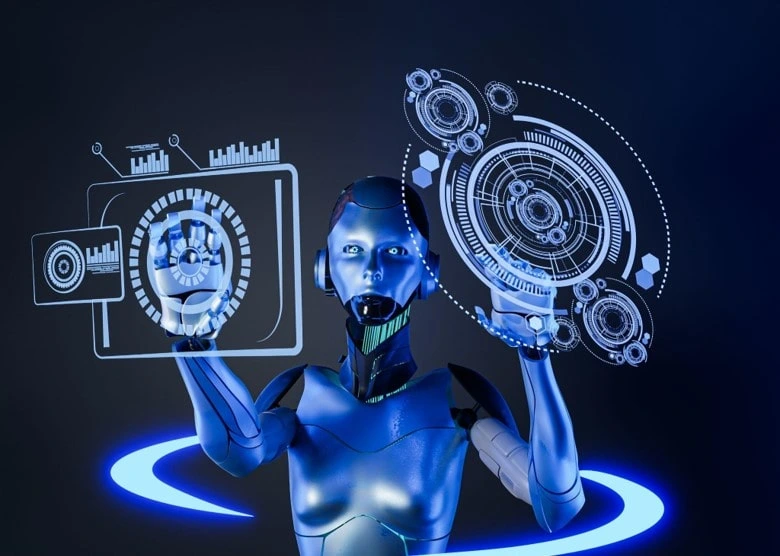Table of Contents
In today’s digital era, Natural Language Processing (NLP) plays a crucial role in facilitating interactions between humans and technology. From virtual assistants to search engines, NLP enables computers to understand, interpret, and respond to human language. This article will cover eight key things you need to know about NLP, from its definition to its challenges and future.
Introduction to NLP: Why is Natural Language Processing Important?

Natural Language Processing (NLP) is a technology that enables computers to understand, analyze, and respond to human language. In the digital era, NLP has become essential, facilitating interaction between humans and machines. From chatbots and search engines to virtual assistants, NLP makes technology more responsive and intuitive.
In everyday life, we interact with NLP more often than we realize. Whether searching for information on Google, using Siri, or asking Alexa to play music, NLP works behind the scenes to understand our requests. With the growing number of NLP applications, this technology allows companies to create services that are more personalized and accessible for users.
Definition of NLP: What is Natural Language Processing?

Natural Language Processing (NLP) is a branch of artificial intelligence (AI) that focuses on interactions between computers and human language. The primary goal of NLP is to enable computers to understand, interpret, and generate human language in a meaningful way.
How does NLP work? This process involves analyzing language through techniques such as tokenization, parsing, and sentiment analysis to understand the structure and meaning of sentences. Using complex algorithms, NLP processes language data to produce relevant and accurate responses.
History of NLP: Development Over Time

The history of Natural Language Processing (NLP) began several decades ago and has evolved alongside technological advancements. Here are some key milestones in NLP’s journey to becoming the advanced technology we know today:
- 1950s: NLP was first introduced through basic experiments to test if computers could understand human language. In 1950, Alan Turing proposed the Turing Test, a test to measure a machine’s ability to mimic human conversation.
- 1960s to 1970s: This period is known for the rule-based approach, where researchers wrote grammar rules to help computers understand language. Although innovative, this approach was limited due to the complexity of human language, which couldn’t be fully captured through rigid rules alone.
- 1980s: NLP began advancing with the introduction of machine learning and statistical models. Instead of using set rules, computers started learning from large amounts of language data to recognize patterns. This shift allowed for improved accuracy in processing text and speech.
- 2000s: With advances in computing and the internet, vast amounts of language data (big data) became available, accelerating NLP development. Corpus-based and probabilistic models allowed computers to grasp context in language, though these models remained fairly basic.
- 2010s to Present: NLP experienced a major breakthrough with the introduction of deep learning and neural networks. Models like Transformers, which serve as the foundation for GPT and BERT, made NLP more sophisticated in understanding language nuances, including context, emotion, and intent. This innovation led to unprecedented levels of accuracy, making NLP a critical part of modern technologies like chatbots, virtual assistants, and intelligent search systems.
The history of NLP highlights its rapid evolution, from simple rule-based systems to highly complex neural networks. With ongoing advancements, NLP will continue to enhance its ability to understand and respond to human language more naturally.
Applications of NLP: Where is NLP Used?

NLP has been implemented in various practical applications that we use daily. Some examples of its applications include:
- Search Engines: NLP enables search engines to understand keywords and display relevant results quickly.
- Chatbots and Virtual Assistants: NLP allows chatbots and virtual assistants like Siri, Alexa, and Google Assistant to respond to user questions naturally.
- Automatic Translation: Tools like Google Translate use NLP to analyze and accurately translate text across different languages.
Through these applications, NLP makes our lives easier and provides a more seamless interaction experience with technology.
Challenges in NLP: What Are the Obstacles?

Despite significant advancements, NLP still faces several challenges in its application:
- 1. Understanding Context and Ambiguity: Human language is often ambiguous, with words that have multiple meanings. NLP must accurately identify the correct context to understand sentences properly.
- 2. Security and Privacy: In many NLP applications, user data is processed to improve accuracy, which can raise privacy concerns if data is not managed correctly.
These challenges highlight the complexity of human language and why NLP remains an evolving field of research.
Related Technologies: Connection with AI and Machine Learning

NLP works alongside other technologies like Machine Learning (ML) and Artificial Intelligence (AI) to achieve optimal results. Here’s how these related technologies differ
- NLP (Natural Language Processing): Focuses on processing human language.
- NLG (Natural Language Generation): Generates text or responses based on given data.
- NLU (Natural Language Understanding): Interprets the intent behind words to capture deeper emotions or context.
With support from ML and AI, NLP can identify patterns and learn from data, enabling a more natural and complex understanding of human language.
The Future of NLP: What’s Coming Next?

NLP technology is expected to keep evolving, with new innovations that will significantly impact our lives. Some of the latest advancements include:
- AI Innovations and Predictive Analytics: These advancements will help NLP better understand and predict user behavior.
- Applications Across Diverse Industries: NLP will see increased use in sectors like healthcare, education, and e-commerce to enhance user experiences.
In the future, NLP will become increasingly sophisticated, enabling human-technology interactions to feel more natural and intuitive.
Conclusion: The Importance of NLP in the Digital Era

Natural Language Processing is a critical technology in the digital era, supporting more natural interactions between humans and machines. NLP enables computers to understand human language, creating more intuitive systems such as chatbots, search engines, and automatic translators. With ongoing technological advancements, NLP will continue to facilitate our interactions with technology, allowing for a more personalized and enhanced digital experience.
In the future, NLP will play a crucial role across various applications, making this technology increasingly essential in our daily lives. By understanding NLP, we can better appreciate the innovations that drive the digital age forward.






